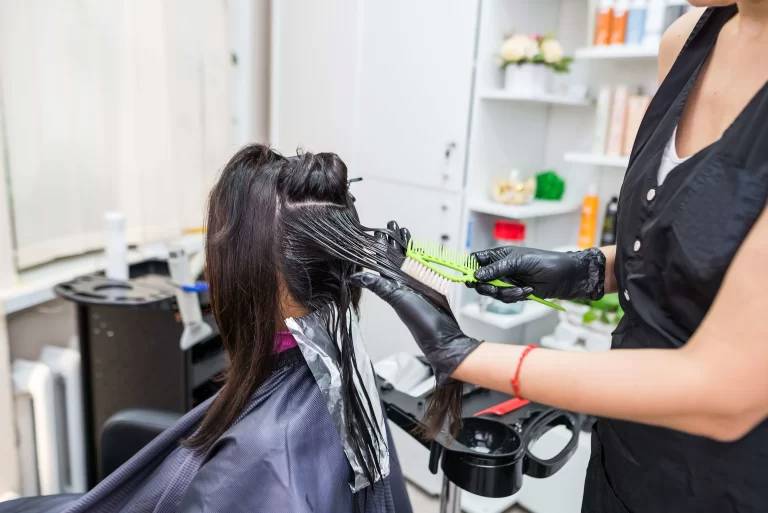
The Connection Between Hair Straighteners and Uterine Cancer
Hair straighteners have become a staple in many people’s hair care routines. From salon professionals to individuals at home, these tools are widely used to achieve sleek, straight hair. They include a range of products, such as flat irons and chemical relaxers. While they may enhance appearance and boost confidence, recent concerns have been raised about their potential health risks.
In recent years, studies have drawn attention to the possible dangers associated with hair straighteners, particularly chemical relaxers. Some research suggests a link between the use of certain hair-straightening products and an increased risk of developing serious health issues, including uterine cancer.
Uterine cancer is a serious condition that affects thousands of women each year. As this issue has gained attention, legal options have emerged for those who believe their health has been compromised. For those affected, it may be possible to file a hair straightener uterine cancer lawsuit to seek compensation for medical bills, lost wages, and other damages.
The Basics of Hair Straighteners
Hair straighteners are tools or products designed to change the structure of hair, making it appear straight and smooth. These products fall into two main categories:
-
Heat-Based Tools: Flat irons and other heated devices temporarily straighten hair by breaking the hydrogen bonds in hair strands.
-
Chemical Relaxers: These products permanently alter the hair’s texture by using strong chemicals like sodium hydroxide or calcium hydroxide.
While heat-based tools offer temporary results, chemical relaxers provide long-lasting effects but involve harsh substances that can penetrate the scalp. This raises concerns about the potential for chemicals to enter the bloodstream and affect overall health.
The Risks Involved in Using Hair Straighteners
Using hair straighteners, particularly chemical relaxers, comes with a range of risks. Prolonged or frequent use can lead to:
-
Hair Damage: Over time, hair straighteners can weaken the hair shaft, leading to breakage and split ends.
-
Scalp Irritation: The chemicals in relaxers can irritate or burn the scalp, especially if applied improperly.
-
Hormone Disruption: Some ingredients in hair-straightening products are suspected of being endocrine disruptors, which can interfere with hormonal balance.
-
Cancer Risk: Studies have suggested a potential link between hair straighteners and cancer, including uterine and breast cancer.
These risks highlight the need for caution and careful consideration when using such products.
A Look at Uterine Cancer: Symptoms and Long-Term Effects
Uterine cancer originates in the uterus, the organ where a fetus develops during pregnancy. There are two main types of uterine cancer: endometrial cancer, which affects the lining of the uterus, and uterine sarcoma, which is less common but more aggressive.
Common symptoms of uterine cancer include:
- Abnormal vaginal bleeding or discharge
- Pelvic pain or pressure
- Difficulty urinating or frequent urination
- Pain during intercourse
If not treated promptly, uterine cancer can spread to other parts of the body, making treatment more challenging. Long-term effects of the disease and its treatments may include infertility, hormonal changes, and emotional distress.
Do Hair Straighteners Cause Uterine Cancer?
Recent studies have raised concerns about the potential link between hair-straightening products and uterine cancer.
Research conducted by the National Institutes of Health (NIH) suggests that women who frequently use chemical hair relaxers may have a higher risk of developing uterine cancer. The study highlighted that the risk was particularly pronounced among women who used chemical relaxers more than four times a year.
The theory behind this connection involves the presence of endocrine-disrupting chemicals (EDCs) in many hair-straightening products. These substances can interfere with hormonal functions and are believed to play a role in the development of hormone-related cancers.
When applied to the scalp, especially on damaged or irritated skin, these chemicals can enter the bloodstream and potentially affect reproductive organs, including the uterus.
Moreover, many relaxers contain formaldehyde and other harmful chemicals, which are known carcinogens. The prolonged exposure to these substances, coupled with frequent use, raises legitimate health concerns.
While more research is needed to establish a direct cause-and-effect relationship, the growing evidence has prompted regulatory scrutiny and legal action against manufacturers.
Legal Options for Affected Individuals
For individuals who believe their uterine cancer is linked to hair-straightening products, pursuing legal action may be an option.
Victims can file a hair straightener uterine cancer lawsuit to seek compensation for medical expenses, pain and suffering, and other damages. Such lawsuits also aim to hold manufacturers accountable for failing to warn consumers about potential risks.
If you’ve been diagnosed with uterine cancer and suspect it may be related to hair straighteners, consult with a legal professional to explore your options. Taking action can not only help you recover damages but also raise awareness about this important issue.
Conclusion
While hair straighteners are widely used for their convenience and aesthetic benefits, they may come with hidden risks. Research suggests a potential link between chemical hair straighteners and uterine cancer, raising serious health and safety concerns.
Understanding the risks, symptoms, and legal options available can empower consumers to make informed decisions about their health and hold manufacturers accountable when necessary.

Comments (0)